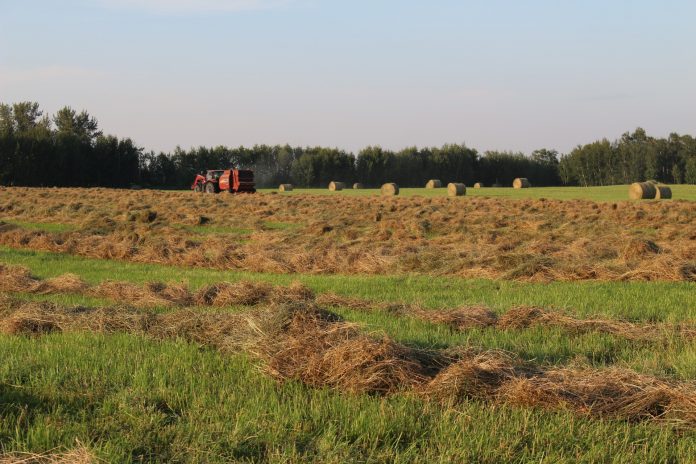Through the years, how to value a standing crop — hay or corn silage — is my No. 1 least-favorite question, mostly because there isn’t a simple or easy answer.
With this year’s weird weather, the hay question is in play, and the corn silage questions are starting to trickle in. So, enter colleagues Bill Weiss, Mark Sulc, Rory Lewandowski and Ben Brown. It was time to bite the bullet and update the resources we can offer to you.
A new resource
This past week we worked up a fact sheet and spreadsheet to help address the standing hay crop question.
Over the next couple weeks, we will update the corn silage fact sheet and ponder how to help farmers value immature corn crops, soybean crops (depending on the weather from here on out) and cover crops they might want to purchase from a neighbor to bolster dwindling quantity and quality of forage inventories.
Focusing on hay for now, sometimes sellers have a (relatively low) price in mind to cover some particular expenses and are glad they do not have to deal with harvesting, handling and selling the crop. It might not happen often, but these situations are relatively simple and benefit both the buyer and the seller.
Since we are pricing one cutting, we are not going to consider the cost of establishing a stand to establish the grower’s base price. In this situation, the seller will either harvest and sell the crop themselves or sell the standing crop, which the buyer will harvest.
Therefore, the grower’s base price would be the price they could receive for the crop from the hay market harvesting/storage/marketing costs.
Determining market value
During price negotiations, recognize that weather and harvest risk is shifted from the grower to the buyer. Usually, when we are valuing a standing crop, the buyer and seller must first agree on the current market value of the hay crop and then adjust that value for harvest costs plus other factors that contribute to the final price.
Determining the market price and those “other factors” are what provides the challenge. How to discover the market price? Market reports are available but vary in their ability to identify quality or type of hay crop. Some report values per ton, others report values per bale, which has little value if per bale weight is unknown.
Until a crop is harvested, the final quality is uncertain. Fortunately, Farm and Dairy publishes a variety of weekly hay auction prices. The fact sheet (find it at www.dairy.osu.edu) includes links to regional and national prices as well.
Applying deductions
Once market price is agreed upon, deductions should be applied for the costs of harvesting and hauling the hay out of the field. The Ohio Custom Rates publication found at www.farmoffice.osu.edu is helpful if your harvest costs are not known.
Price should also be adjusted for risk — and this is a tough one. The buyer is assuming weather risk. Will they be able to harvest the crop at the right time? Or will it rain for 2 weeks before they can get in to harvest? Will they be able to harvest at the right moisture? If too wet, quality deteriorates rapidly. Will the final price be determined pre-harvest, or will some post-harvest adjustments be made?
If this is desired, then a post-harvest feed analysis is completed and price can be adjusted for dry matter and nutrient content.
The fact sheet walks you through this process, including reasonable quality adjustments, and includes a spreadsheet to help.
The valuation process
The valuation process has three steps:
1) Determine market price
2) Calculate and apply deductions:
a. Cost of harvest including mowing, tedding, raking
b. Cost of baling
c. Cost of hauling
d. Risk — nutrient variation
e. Risk — weather, etc.
3) Adjustments: These optional adjustments can be made if a forage analysis is done post-harvest:
a. Dry matter
b. Feed value — if this option is chosen, then there is no deduction made for risk of nutrient variation (d) above.
Setting a price for a standing hay crop is challenging, but doable. It should be done before the crop is harvested. Each situation will be a bit different, but following the process outlined above and described/discussed in much more depth in the fact and spreadsheets we worked up last week will guide you through the process.













